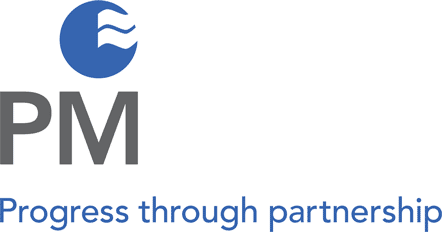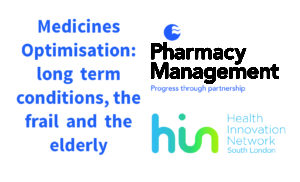There is a recognised procedure that lawyers follow when they are trying to work out what a law means.
They begin by looking at the plain English meaning of the law. Thus, if a law refers to a car, it does not include a bus or a van. They will try to construe the law so as to cause the fewest possible conflicts with another law. There are a number of legal maxims that relate to this, but wrapping up the process is the question “What mischief was being addressed?”
There is a logic behind this. It is that Parliament means what it says (hence the plain language rule), that it does not contradict itself (hence the conflicts rule) and that what it does has a purpose (the mischief rule). It is assumed that Parliament would not waste its time discussing something that has no purpose, so if you find out what Parliament was trying to put right, you can construe the law on the assumption that it did, in fact, put the mischief right. Thus if, for example, the preamble to an Act of Parliament says that it is a law to prevent the sale of football boots on Thursdays, you try to read the law in a way that would achieve that. In my particular daft example, the law does not seem to intend to prevent the leasing of football boots (if anyone does such a thing).
We have attempted this explanation because it is clear that some people are confused by the policy on management of Potential Conflicts of Interest promulgated by NHS England and are interpreting it in a way that was never intended. It does not say that all contact with outside agencies or companies is naughty or to be avoided; it says that all contacts involving transfers of value have to be reported so that managers can evaluate whether there is anything improper about them. It is unfortunate to say the least that the press seem to think that there is something wrong about a leading doctor accepting research funding, or a pharmaceutical adviser being paid for their time in offering advice where that interaction has been properly declared. Declarations of conflicts of interest are made so that they can be managed properly, and managing these, like managing risk, is not best achieved by eradicating it. Nobody would suggest managing risk to a child by locking him in his bedroom for eighteen years, yet some people think that the NHS is trying to avoid potential conflicts of interest by forbidding all contact.
Because Pharmacy Management works with both industry and the NHS (not to mention having to work with each national health system in the devolved administrations) we spend a lot of time on promoting transparency. Unfortunately the systems operated by the pharmaceutical industry and the NHS do not dovetail perfectly – there are occasions when the industry has to disclose something that the NHS professionals are not obliged to report, and vice versa – and in our view the disclosure systems do not always distinguish clearly enough between a transfer that could be diverted and one that cannot.
Let us explain that a bit further. If I receive a £10,000 grant for some research there needs to be some system whereby I can prove I spent it on appropriate things because there is a risk that I might not. If I receive the same sum by way of having my fees paid to attend a university course I have undoubtedly benefitted but there was no way that I could have used the money in any other way.
The funding model that Pharmacy Management uses for its events is well-tested and we consult widely within the NHS to ensure that it meets current expectations of probity and transparency. For example, in 2015 we introduced our Transparency Certificates. These are produced for each event to show who has funded Pharmacy Management’s provision. This matters because the attendees do not receive funding directly from any particular company and therefore, on the face of it, there would be no need to make a declaration of potential conflict of interest. However, the training they receive at these events undoubtedly has a value and they might feel uncomfortable if they said nothing at all about it. Following the mischief rule, if the purpose of the NHS policy is to ensure that governance managers can ensure that nothing untoward has taken place, giving them the Transparency Certificate meets the purpose of the policy even though, on a strict reading of the policy, there may have been no requirement to make a declaration.
That value is hard to calculate for large events, because no two delegates may have followed the same programme during the day, but we will calculate one for those events where every delegate follows the same timetable during the day. This goes beyond the requirements of the NHS in allowing people to say “I attended this meeting and my place was worth £66 which was contributed to by these four companies.” There is nothing wrong or embarrassing about making such a declaration – you received training without charge to the NHS and without creating any potential obligation to those who indirectly funded it. It will probably have cost less than comparable training directly purchased; and it comes with our guarantee that we will defend the probity of the process on your behalf if questions should be asked. Any governance manager who wants to know how a meeting was run can contact our Chairman or our Chief Executive Officer and will receive a prompt and personal reply. That’s a promise.
Not only that – we distinguish clearly between the promotional and non-promotional parts of our events (the Academy and CLIP have no promotional element at any time). There are specified exhibition areas and times and no promotional activity takes place elsewhere. The Chairman of the meeting has to certify that in his or her report.
We are proud to have been in the forefront of promoting transparency. We intend over the next few months to take more steps to safeguard our reputation and, most importantly, yours. If you have any suggestions or concerns we would be delighted to hear of them so that we can ensure that you have the greatest protection possible against scurrilous accusations.
Let us add one more thing. We do not believe that our partner organisations (whom you can see listed on our website) would have anything to do with us if they were not convinced that we conduct our business in a proper and transparent way.


